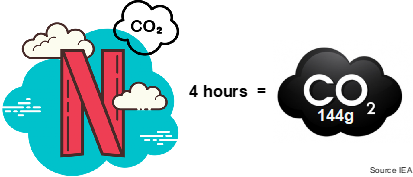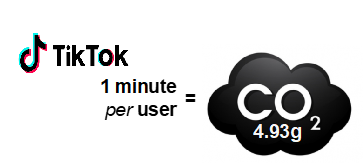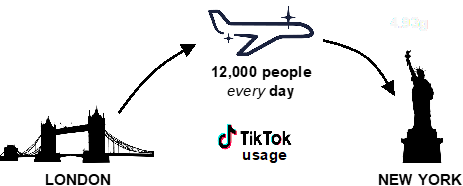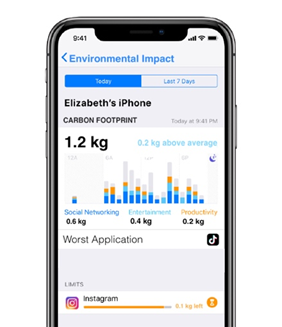This article will discuss the concept of Eco-First IT. It's something I'm very passionate about outside of work and now I'd like to introduce these concepts to BJSS and our design brand, SPARCK. Together I believe we can navigate the challenges of delivering Eco-First IT and build awareness of its benefits.
Future articles will provide examples of how we can reduce the impact of the software we build, as well as demonstrate some of the approaches we are taking.
The internet can have a negative impact on the environment if improperly used. By applying distributed intelligence to how we do things, we can aim to mitigate that negative impact.
“The internet is dirty. Data transfer requires electricity, which creates carbon emissions — and this leads to climate change."
Organic Basics
We live in a world where we are constantly streaming data, either from browsing the internet, listening to music, checking our social media accounts, or watching on-demand movies and television.
But few realise the impact that our data-hungry internet consumption has on the environment.
For example, the IEA estimates four hours of video streaming produces 144g CO2, which equates to driving a small, petrol car 1 km – something that most of us would not be aware of!
This is not to say that we should not produce videos. They can have a positive impact on the environment by helping consumers make more informed decisions. We should, however, think about the content we produce and publish, and ask ourselves what the environmental impact (positive or negative) will be.

The same is arguably true of social media applications. For example, TikTok is currently by far the least environmentally-friendly social media platform, generating 4.93g of Co2 emissions per person, per minute.

To put the environmental impact of this into context, figures show that Americans aged 18 and over collectively spent 1.43 billion hours on TikTok in March 2020. That equates to approximately 12,000 people flying from London to New York every day that month.

This means that the CO2 footprint for America’s TikTok usage for a year (based on March 2020 usage) is estimated to be 144% higher than the total number of passengers flying from London to New York in 2018.
In light of this, we now need to investigate the way in which we design and build applications and understand which aspects have the highest environmental impact. We should also aim to make consumers aware of the impact they are having on the environment by just scrolling through their Instagram feed or by watching streaming videos.

If, for example, Apple were to include a carbon footprint measure, aggregated into the iOS ‘screen reading time’ application, this would help to drive awareness of users and in turn reduce the use of higher impact applications.
However, putting the responsibility onto end-users is insufficient. As the number of connected devices increases and we spend more time using those devices, it is on the people who design and build IT solutions to find ways to reduce the impact they have on the environment.
Eco-First IT is the future
Eco-First IT is architecting, designing, and delivering applications in a way that minimises the impact their use has on the environment and educates end-users on the environmental impact of using data-driven applications.
If you are designing or developing applications that deliver data to users, you can look at each part of your delivery pipeline and identify areas to make improvements, starting with the following areas...
Eco-First Product Design
Eco-First product design is about reducing the data footprint of the product you are designing. This may be a challenge, particularly in the retail environment where images sell products, but it is up to you to help break the trend, deliver an eco-friendly website, and educate both the retailer end-users.
At the very least, you can reduce the number of images you transfer, and if possible, remove the images completely.

One great example of where this has been successfully implemented is Organic Basics, who have designed a low impact version of their website based around some key principles:
- Do not load any images before they are actively requested by a user.
- Educate the user by informing them of the impact of their browsing behaviour.
- Do not use videos.
- Compress all data to the greatest extent possible.
- Limit the amount of light emitted by the screen.
“Our low impact website reduces data transfer by up to 70% in comparison to our regular website."
Organic Basics
Eco-First Product Development
As product architects, designers, and developers, you can think about how and when you deliver assets to a device. Approaches could include compressing data, caching effectively, and only delivering assets when needed (even though this goes against current design practices where assets are delivered in the background to make the application as responsive as possible).
Working closely with product designers will help them understand the technology challenges of delivering data on demand and allow them to design an experience that still delights the user whilst delivering a low-impact product.
Key principals which Organic Basics use to great effect are:
- Running the platform on sustainable energy.
- Adapting delivery to reflect the amount of renewable energy available.
- Storing data locally on the user’s device to minimize data transfer.
- Loading only the most crucial programming scripts, frameworks, and cookies.
ADDITIONAL ECO-FIRST CONSIDERATIONS
Think about the servers you need to run and, where possible, run your services with usage-based consumption. Are your development or UAT servers still running when you don’t need them?
Just think about how many ‘free’ EC2 instances are running 24x7 in AWS that are not actually running any real workloads and then consider the climate impact of those servers.
These are just a few of the areas where you can consider to improve the environmental impact of the software you deliver. The IT sector consumes an estimated 10% of global electricity - at scale, these things can really make a difference.
Like many others, BJSS is at the early stages of this journey. As we take this path, we’ll include our learnings in future articles in this series, including some of the practical approaches you can adopt to make a difference.


